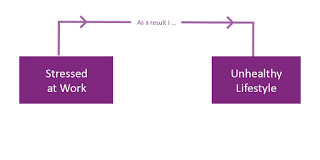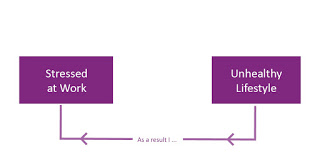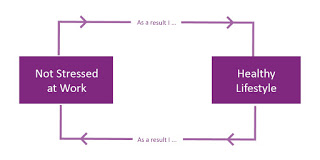Blog
5 Actionable Steps to be More Productive at Work
6th October 2016
Do you have a to-do list that just won’t budge? We’ve all been there. However much you try to clear the list, you feel like you are chasing your tail. What if I told you that it didn’t have to be that way? That there can be a way to achieve incredible results in a short amount of time? Well by implementing even a few of these tips, you are sure to speed up your productivity metabolism!
1. Take Regular Breaks
Studies show that working intensely for hours on end actually makes you less productive. Research carried out by Julia Gifford and her team at Draugiem show that similar to the Pomodoro method, the 52/17 method of breaking is super-productive.
The 52/17 Method
Using the productivity app DeskTime, Gifford and the team found that the most productive 10% of people take tactical breaks. To be precise, they would work intensely for 52 minutes, then break for 17, repeating every hour. Gifford wrote in this article at The Muse:
“The reason the most productive 10% of our users are able to get the most done during the comparatively short periods of working time is that their working times are treated as sprints. They make the most of those 52 minutes by working with intense purpose, but then rest up to be ready for the next burst. In other words, they work with purpose.”
Humans weren’t built for sitting for eight hours a day, and studies even show that breaking every hour improves our health as well. Try taking set, tactical breaks and measure how much your productivity increases.
2. Don’t Check Email
For the next hour, take note on how many times you flick back to Outlook or Gmail. I can guarantee you that it will be over 10 times. Do those emails need to be replied to as soon as they land in your inbox? In most cases, no. How about setting some time aside twice a day to check your email? It is a pronounced tactic of Tim Ferris. For maximum optimisation of your time, take note of the times in the day you feel most sluggish (for me, it is 11pm and 4pm). Schedule your email time in these periods to save the important work for peak times.
3. Manage Expectations
“I thought you would have had this done by now”, “You told me this would be on my desk yesterday”. We have all heard phrases like these and no one likes to hear them! It may mean your bonus, job security or if you are a freelancer - payment on the line! There are a few tricks that should help you ease into giving realistic and honest deadline expectations:
Be Honest and Open
Don’t be afraid of being honest. If a project can’t get finished until next week then be open, honest and upfront. It will place a realistic deadline in your colleague’s mind-set. We guarantee you, they will not question it.
Provide an Accurate Time Frame
It's easy to feel under pressure to impress to colleagues and superiors by promising that you can deliver on a project when you know you can’t. Before you know it the pressure builds up and you become less productive, producing poorer quality work. If however, you were to provide a more accurate time frame, whether longer or shorter, then you can schedule your time effectively and not have to answer to any late demands. When making a calculated prediction, take a step back and ask yourself the following questions prior to replying:
- What is the specification and what do you have to achieve?
- What is your current workload looking like?
- Is this a priority job?
- What would an above-average completed outcome be?
- For what will you be judged?
- Will you have to do any additional work to finish the project (research, learning)
- Are there any other people involved that may slow the process down?
Avoid Replying by Email
Have you ever sent a text message and the recipient’s feelings didn’t match those you intended? Well, this is because only 7% of communication is the words used. 38% is from your body language, and 55% is the tonality of your voice. So, by responding via phone or in person you can convey your message far better than hiding behind an email. Without the added risk of misinterpretation!
By providing a realist response time to a colleague’s request will allow you to avoid those awkward conversations and prevent rushed, poor quality work
4. Apply the Two-minute Rule
The rule can be applied to both your work and your personal life. Taken from David Allen’s book Getting Things Done, the two-minute rule is around to help you stop procrastinating smaller tasks.
Have a think back over the past day. For every time you procrastinated or put off a task, count how many would have taken two minutes or less. I’m guessing it’s a good percentage. Whether they were washing up, the laundry or [erhaps more work-based such as finishing that document or having an awkward conversation, we’re all guilty of two-minute procrastination.
The two-minute rule says that ‘if a task can be done in two minutes or less, then do it now”. Simple, and easy to follow. Go spare the next 120 seconds to get one thing done.
These tasks compound and soon enough you have to dedicate a whole day to needless errands. Well, by integrating Allen’s two-minute rule into your thought process, you can keep your procrastination at bay.
5. Live Healthier
Wait, don’t leave now. We understand that everyone hate’s hearing this phrase, mainly because of the many lecturing articles and conversations they have experienced. Well here is an argument you may not have seen before about why you should put your health first, to make your work more productive.
Picture this - it’s the 11am or ‘black hole’ period, breakfast seems like it never existed and lunch feels like it will never arrive. Your workload seems to be never ending, with a whole project due at the end of the day, on top of an overflowing inbox. Underneath the desk, your gut feels like it is eating itself and the vending machine is only an arm’s reach away.
“I don’t have time to eat healthy at work, the stress of my job means I look forward to eating that bar of chocolate and crisps. Then afterwards I feel sluggish and don’t want to work.”
Placed in a diagram, this response looks something like this.
Let’s switch that on its head. What if that is simply an excuse that you give yourself? Perhaps your rational thought process is that in the diagram above, but the scientific system in your body is demonstrated in the following diagram:
If you can comprehend this process that naturally occurs in your body, then you can change the way this model works. Your mood, confidence and overall ability to work under pressure can all be altered by small changes in the way you live. So if you can make at least some of the changes listed at the bottom of this step, you can change the way you deal with stress at work. You'll see immediate changes and your thought process will soon start to look like this:
Voila. Once you are in the loop, you’re able to de-stress at work, be more productive and produce better quality work. If you start to slip out of the loop you will see the changes immediately and hopefully notice the need to return to the loop.
By ‘healthy lifestyle’ we aren’t just talking about what you put in your mouth but in fact, small simple changes you can make to your lifestyle that will have a massive impact on your productivity. Some small changes include:
- Getting 8 hours of deep sleep per night (try this article).
- Getting at least 20 minutes of exercise per day (even better if this is before work as the released endorphins increase happiness and lower stress before starting the day). This can be as simple as a walk during your lunch hour! By getting moving you not only experience the benefits above but also help combat those eight hours a day sat in a chair.
- Structure your meals. Yes, guys, this means eating a wholesome breakfast (ditch your regular vanilla spiced latte with pain-au-chocolat). Not only can you save money on impulse vending machine purchases, but eating well-balanced meals at set times each day will reduce snacking and those work-distracting hunger pains. Commit to saying no to that meeting over lunchtime and prioritise your meal structure for a routine that sticks.
- Choose healthier options. Sounds simple enough right? Swap the latte for a green tea and the mid-morning cookie for some grapes and soon enough you will be in the routine.
Now we’ve listed our top steps that you can action today, what helps you to be more productive at work and produce the best quality outcome effectively? Let us know in the comments below.




